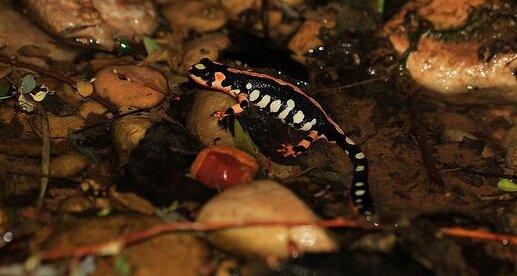Water stress pushing reptiles, amphibians to extinction

TEHRAN – Drought, reduced precipitation, and rainfall fluctuations have endangered the lives of living organisms, especially reptiles and amphibians that are vulnerable to water and temperature changes.
Many water resources in Iran are under pressure and amphibians that spend part of their life cycle in water are endangered, which has been mainly caused by water shortages in the wetlands and lakes, Reza Faraji, head of wildlife conservation office of the Department of Environment, said.
Referring to other challenges for the lives of reptiles and amphibians, Faraji said that habitat destruction, water contamination, sewage inflow, and poisoning are other life-threatening factors for these species.
Lamenting that it is not possible to say exactly which species are in danger of extinction, he stated that marsh crocodile is one of the endangered species due to limited distribution area and low population and living in drought-ridden provinces.
Also, Euphrates softshell turtle, is in serious danger of extinction, he noted, regretting, Vipera ursiniiis also is threatened by illegal hunting and habitat destruction.
Referring to the DOE’s plans for habitat and species protection, he stated that spider-tailed horned vipers, for example, were listed as endangered three years ago and annexed to the Convention on International Trade in Endangered Species of Wild Fauna and Flora (CITES).
The CITES is an agreement between governments that regulates the international trade of wildlife and wildlife products. It came into force in 1975 with the goal of ensuring that international trade does not threaten the survival of wild plants and animals.
It is the duty of the member states to prevent the trade in plants and animals of this species. Endangered species are listed on one list and at levels one, two, and three based on threat levels. Any trade in level one species is strictly prohibited, and governments are only allowed to conduct research on these species. At levels two and three, the sensitivities decrease slightly, ISNA reported on Saturday.
Luristan newt, the world’s most attractive salamander confined to western Iran, was driven on the brink of extinction due to habitat degradation as well as uncontrolled haunting for national and international pet trade which paced up near the Iranian New Year celebration, he also lamented.
So, we listed the species on the CITES to stop its international trade, and its domestic trade has been controlled with the help of the DOE and has reached almost zero. Also, the springs and habitats of these species have been restored, Faraji further emphasized.
According to Article 50 of the Constitution, environmental protection is a public duty. All executive bodies must work with the DOE to help preserve the endangered species as part of conservation and management programs.
Importance of environmental protection
There are 1,300 species of animals in the country, 130 of which are endangered and threatened, Hassan Akbari, deputy head of natural environment and biodiversity of the Department of Environment, said in December 2021.
Over 10,000 environmental violators are arrested on average annually. Asiatic cheetahs, great bustards, Siberian cranes, Persian onagers, and some reptiles and amphibians are among the endangered and threatened species, he said.
Significant smuggling and habitat destruction are the main threats to the species, and promoting a culture of kindness to the environment and strengthening social participation is one of the most important and effective strategies in protecting the environment, he explained.
The availability of large quantities of weapons and ammunition to the poachers is another risk factor for wildlife populations, Akbari added.
To preserve the existing biodiversity over the wide geographic expanse of Iran, four types of areas have been designated for preservation and protection, including, national parks, wildlife refuges, protected areas, and natural national monuments. In 1997, the DOE held supervision over 7,563,983 hectares of such areas.
Currently, the supervised areas reached about 18.5 million hectares, including, 30 national parks, 170 protected areas, 45 wildlife refuges, and 37 national natural monuments.
Iran has a high diversity of species due to geographical conditions, climatic diversity, huge water resources of the Caspian Sea in the north and the Persian Gulf, and the Sea of Oman in the south.
According to the latest studies, about 1,300 species of vertebrates, including mammals, birds, reptiles, amphibians, and aquatic fish, about 30,000 species of invertebrates, and 8,000 species of plants have been identified in the country.
Unfortunately, over the past two decades, human activities have led to alarming degradation of ecosystems, deletion of genes, species, and biological capabilities; Human threats to biodiversity have accelerated the most over the past 50 years over the entire history of human life.
FB/MG
